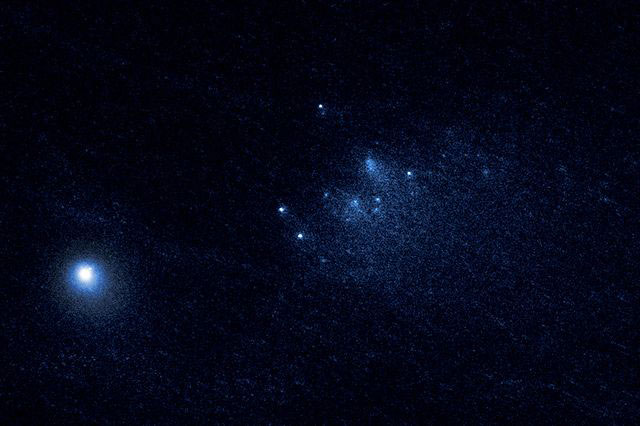Flash Physics is our daily pick of the latest need-to-know developments from the global physics community selected by Physics World‘s team of editors and reporters

New material could boost waste-heat harvesting
A new material that emits short-wavelength thermal radiation when heated could be used in systems that convert waste heat into electrical energy. Created by an international team co-led by researchers at Purdue University, the University of Alberta and Hamburg University of Technology, the material comprises alternating layers of 20 nm of tungsten and 100 nm of hafnium oxide. The structure was chosen so that the emission of long-wavelength infrared photons from the material is suppressed while the emission of shorter wavelength photons is enhanced. These shorter wavelength photons have enough energy to drive a photovoltaic cell, while the longer wavelength photons do not. The team tested the material by heating it to 1000˚C and using it to power a photovoltaic cell. They found that the new material produced 90% more electrical energy than a conventional black-body infrared emitter. The material is described in the above video and Nature Communications. It could someday be used to generate electricity from the waste heat produced by industrial processes and even automobile engines.
‘Hairy’ nanorods raise their polymer arms
One-dimensional nanorods that resemble tiny bottlebrushes with polymer “hairs” on their surface have been made by researchers in the US. The nanorods can be made from a wide variety of precursor materials but are all still uniform in size. The nanorods are based on a cellulose backbone and range in size from a few hundred nanometres to a few micrometres in length. Being able to control the physical dimensions of the nanorods is an important achievement because this determines the rods’ optical, electric, magnetic and catalytic properties. Lead researcher Zhiqun Lin at the Georgia Institute of Technology says that the nanorods “are of both fundamental and practical interest” and their potential applications include optics, electronics, photonics, magnetic technologies and more. The research is described in Science.
Hubble spies comet breaking apart

The sharpest and most detailed observations of a comet breaking apart have been made by a team of astronomers using NASA’s Hubble Space Telescope. Located about 100 million kilometres from Earth, 332P/Ikeya–Murakami was imaged over three days in January 2016 as 25 fragments consisting of a mixture of ice and dust drifted away from its core. The process occurred in slow motion, with the fragments moving at the walking speed of a human adult, according to David Jewitt at UCLA, who led the team. The astronomers believe that the 4.5 billion-year-old comet may be spinning so fast that material is being ejected from its surface. The resulting debris is now scattered along a 5000 km-mile-long trail, larger than the width of the continental United States. The discovery is described in Astrophysical Journal Letters.
- You can find all our daily Flash Physics posts in the website’s news section, as well as on Twitter and Facebook using #FlashPhysics. Tune in to physicsworld.com later today to read today’s extensive news story on wobbling graphene.



